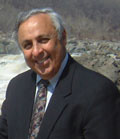|
 In
my last article (See Archives), we reviewed the definition of a
medical device. We now know, for example, that if our product
is advertised or labeled with a claim that it is to be used for the
diagnosis, cure, treatment, prevention, etc. of a disease or to affect the structure
or function of the body, and we want to market it in the U.S., it is
regulated by the FDA. In
my last article (See Archives), we reviewed the definition of a
medical device. We now know, for example, that if our product
is advertised or labeled with a claim that it is to be used for the
diagnosis, cure, treatment, prevention, etc. of a disease or to affect the structure
or function of the body, and we want to market it in the U.S., it is
regulated by the FDA.
There are a whole series
of laws that give the FDA authority to regulate medical devices.
These include the Federal Food, Drug, and Cosmetic (FFD&C) Act of
1938, The Medical Device Amendments of 1976, the Safe Medical Devices Act
of 1990, FDA Export Reform and Enhancement Act of 1996 and the Food and
Drug Administration Modernization Act of 1997. The names are not as
important as the fact that the provisions in these laws give the FDA the
authority to publish regulations. The FDA usually does this by
publishing proposals in the Federal Register for comment and then, after
evaluating all the comments, publishes a final regulation in the Federal
Register. The final regulations are, on an annual basis, placed in
the Code of Federal Regulations (CFR). Most medical device
regulations can be found in Title 21 CFR Parts
800-1299. This volume may be purchased from the United States
Government Printing Office through http://www.access.gpo.gov/su_docs/chklst/chklst.html.
The FDA regulates medical
devices through its Center for Devices &Radiological Health (CDRH).
We often overlook the second part of the name. It means that the FDA
also has authority over products that produce electronic product
radiation. Most of these products are not medical devices unless, of
course, you make a medical claim for them! Radiation emitting
products have special recording, reporting and labeling regulatory
requirements.
(1) The term
"electronic product radiation" means:
-
(A) any ionizing or
non-ionizing electromagnetic or particulate radiation, or
-
(B) any sonic,
infrasonic, or ultrasonic wave, which is emitted from an electronic
product as the result of the operation of an electronic circuit in
such product;
(2) The term
"electronic product" means:
-
(A) any manufactured
or assembled product which, when in operation,
-
(i) contains or
acts as part of an electronic circuit and
-
(ii) emits (or in
the absence of effective shielding or other controls would emit)
electronic product radiation, or
-
(B) any manufactured
or assembled article which is intended for use as a component, part,
or accessory of a product described in clause (A) and which when in
operation emits (or in the absence of effective shielding or other
controls would emit) such radiation. The term
"manufacturer" means any person engaged in the business of
manufacturing, assembling, or importing of electronic products.
Radiation-emitting
products include such diverse products as television sets, X-ray machines,
electron microscopes, tanning machines, radar devices, electromedical
equipment, lasers, communications transmitters, vibrators, sound
amplification equipment, and ultrasonic cauterizers. Remember that
if you make any medical claims for such products, your product is a
medical device also subject to medical device regulations in addition to
the provisions for radiation emitting products.
CDRH has many
responsibilities but I can only highlight a few. The Office of
Device Evaluation (ODE) oversees FDA’s medical device approval and
clearance programs. The Office of Compliance looks at advertising and
promotion issues, schedules inspections and otherwise enforces the medical
device laws. One especially helpful part of the CDRH is the Division
of Small Manufacturers, International and Consumer Assistance (DSMICA).
Its job is to provide technical and regulatory help to medical device
companies. You can FAX your questions to 1-301-443-8818 or email them to yourFDAconsultant@medisourceasia.com
Dr. Norman F. Estrin
July
19, 2002
|
|
|
|
If you have
questions related to the contents of this column, please
write to Dr Norman Estrin at yourFDAconsultant@medisourceasia.com
and he will try to answer you. This column is for you
and we welcome your suggestions on how to improve it.
|
|
Dr. Norman Estrin
is a
recognized authority in the medical device and cosmetic
industries. He has had over 30 years of experience in
directing scientific and technical and regulatory programs
in these industries. He is Regulatory Affairs
Certified (“RAC”) by the Regulatory Affairs Professional
Society. Dr. Estrin is the founder of ESTRIN CONSULTING
GROUP, INC. (ECG). ECG offers cost-effective,
experienced consulting to medical device firms on FDA-
related issues. Its Services include preparing 510(k)
and other FDA submissions, regulatory strategy development
and acting as agent and official correspondent for non-U.S.
medical device companies.
|
|
For more information, contact him
at
yourFDAconsultant@medisourceasia.com
or visit his website: http://www.yourFDAconsultant.com
|
|
|